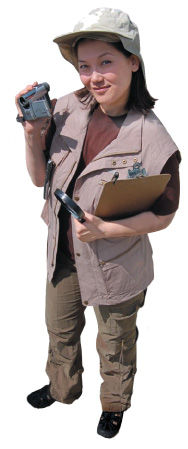 News
ETHNOGRAPHYPharmaVOICE June 2007
|
| SYLVIA ARUFFO,PH.D.,ETHNOGRAPHIC RESEARCHER AND LINGUIST AND FOUNDER, AND ANN-MARIE CONRADO, A CULTURAL ANTHROPOLOGIST ETHNOGRAPHER, AND ONE OF THE PARTNERS OF COMMUNICATION SCIENCE INC., DISCUSS HOW TO INCREASE COMPLIANCE,NEW PRESCRIPTIONS, AND TOTAL PRESCRIPTIONS OVER TIME THROUGH THE USE OF ETHNOGRAPHIC TECHNIQUES. |
For decades, consumer corporations such as Maytag, Microsoft, and automotive manufacturers have relied on a type of qualitative research known as ethnography to make sure their products and instruction manuals meet the needs of their end users.
“Ethnography is a field of research often used in cultural anthropology,” says Ann- Marie Conrado, industrial designer, cultural anthropologist ethnographer, and one of the partners of Communication Science Inc. “Ethnographers go into people’s homes and work environments to study how they behave in their natural settings. They don’t ask for people’s opinions, they observe their actual behaviors. By paying extremely close attention, highly trained ethnographers are able to determine where products and materials go wrong and how they can be improved.”
According to Ms. Conrado, the approach that managed care organizations (MCOs), health plans, home-care companies, employee groups, and pharma companies take for their healthcare messaging and tactics can be improved by applying this scientific, realitybased, specialized approach to compliance, which also holds promise for great advances in clinical-trial settings as well.
“Ethnography is proving to be invaluable in uncovering hidden barriers to patient compliance,” she says.
Fewer than one-third of patients adhere to their healthcare regimens. |
APPLYING COMMUNICATION SCIENCE TO PATIENT MATERIALS
Most marketers can’t even count the number of focus groups they’ve observed.
“Focus groups certainly can be enlightening, but the results are often misleading,” says Sylvia Aruffo, Ph.D., ethnographic researcher and linguist and founder of Communication Science. “The problem is, people come to focus groups on their best behavior. Their responses are completely dependent on what they remember and what they are willing to say in front of a group. They may be afraid to admit to their behaviors, or to say if they don’t understand the materials. That’s another reason why ethnographic research is more authentic. It’s like the difference between in vitro and clinical research.”
TOOLS OF THE TRADE
After completing an ethnographic research study, there are some very specific tools that can be applied to analyze and design patient communication materials, including semiotics, linguistic pragmatics, mnemonics, and cognitive mapping.
Semiotics, which is the study of symbols and how people interpret visuals, allows for the selection of the most impactful graphic design, illustration, photography, and layout.
Linguistic pragmatics examine the gap between what a writer means to say and what a patient interprets, as a way to avoid misunderstandings.
 “Linguistic pragmatics
allows for the study of language
in context,” Dr. Aruffo
says. “The computer industry
learned the power of context
when it told people to complete
a sequence and then ‘press any
key.’ People failed to comply
because they were anxious and
were looking for a specific
key marked ‘any.’”
“Linguistic pragmatics
allows for the study of language
in context,” Dr. Aruffo
says. “The computer industry
learned the power of context
when it told people to complete
a sequence and then ‘press any
key.’ People failed to comply
because they were anxious and
were looking for a specific
key marked ‘any.’”
In terms of a health healthcare example, Ms. Conrado poses the following: consider this set of instructions for changing a bandage. The first three steps are: (1) remove the dressing, (2) check for redness around the wound, and (3) call your doctor if you have a temperature of 101 or higher.
| The CSI team,which includes biostatisticians, linguists, cultural anthropologists, medical personnel, industrial designers, and creatives, is uncovering hidden barriers to patient compliance by using techniques based in ethnography. |
By using linguistic analysis, the problems with this communication are uncovered.
“Patients wondered if the communication meant stop right now, find a thermometer, which wasn’t listed in the supplies to gather, take their temperature, and call the doctor — all with the dressing off,” she says.
Another tool is to use mnemonics techniques like rhythm, alliteration, musicality, humor, and surprise to make materials memorable.
By using cognitive mapping, marketers can build links from what a person already knows to new information he or she must learn.
“The real challenge in developing patient materials is not to make them simple, but to make them familiar, so that they create less anxiety and are more easily remembered,” Dr. Arrufo says. “Influencing patient behavior is a complex business. Campaigns must not only be accurate, but actionable, and the quality of the work depends directly on the richness and reliability of the research.”
According to Dr. Arrufo and her team, for healthcare the strongest content comes from evidence-based medicine.
“By combining evidence-based strategic designs with ethnographic research, the result is a unique system that provides messaging and tactics that work to increase compliance and adherence,” she says.
| TRADITIONAL ADVERTISING VS.STRATEGIC MESSAGING CAPITAL |
IN CONDUCTING PATIENT RESEARCH,CERTAIN COMPLIANCE BARRIERS AND “PET PEEVES” SURFACE REPEATEDLY.UNDERSTANDING THESE CAN HELP STRENGTHEN PATIENT-EDUCATION MATERIALS. NO PHONY FAQS NEVER SAY SOMETHING IS SIMPLE WHEN IT’S NOT BEWARE OF OVERCOMPLICATED DIAGRAMS NEVER OVERESTIMATE LITERACY |
Communication Science Inc., Buffalo Grove, Ill., is a pioneer in changing patient behavior by applying communication science to medical marketing: ethnographers shadow patients at home and work with video and audiotape, photos and field notes, and confirm observations with interviews; linguistic researchers bullet-proof instructional copy and semiotic analysts add power to graphic design; and productdesigners complete the process by creating devices that eliminate barriers to adherence. For more information, visit communicationscience.com.
PharmaVOICE welcomes comments about this article. E-mail us at feedback@pharmavoice.com.
